

Turmeric has been used for centuries in Ayurvedic medicine, which integrates the medicinal properties of herbs with food. Turmeric is a spice that comes from the turmeric plant. It is commonly used in Indian Foods. It has a warm, bitter taste and is frequently used to flavor or color curry powders, mustards, butter, and cheeses. But the root of turmeric is also used widely to make medicine. It contains a yellow-colored chemical called curcumin, which is often used to color foods and cosmetics. Turmeric Contains Bioactive Compounds with powerful medicinal properties. Value-added products are raw agricultural products that have been modified or enhanced to have a higher market value and/or a longer shelf life.
There are many values added products that can be made using turmeric that have huge commercial acceptability in the market as well as health benefits. Some of the examples are Turmeric Oleoresin/Extract, Haldi Drops, Curcumin Powder, Turmeric Milk etc.
Value Added Products Manufactured Using Turmeric
1. Turmeric Oleoresin
Turmeric Oleoresin is a resin-like viscous material obtained when a spice is extracted with a hydrocarbon solvent. Turmeric oleoresin is being used increasingly by the processed food industries in the West to impart colour and aroma. Oleoresin is a mixture of compounds, namely curcumin, volatile oil, and other active ingredients, non-volatile fatty and resinous material extractable by solvents, used singly, in sequence, or in combination. Turmeric oleoresin is orange–red in colour and consists of an upper oily layer and a lower crystalline layer. Turmeric oleoresin is often used for flavoring and coloring in a wide range of beverages and food products and it has very wide acceptance among consumers.
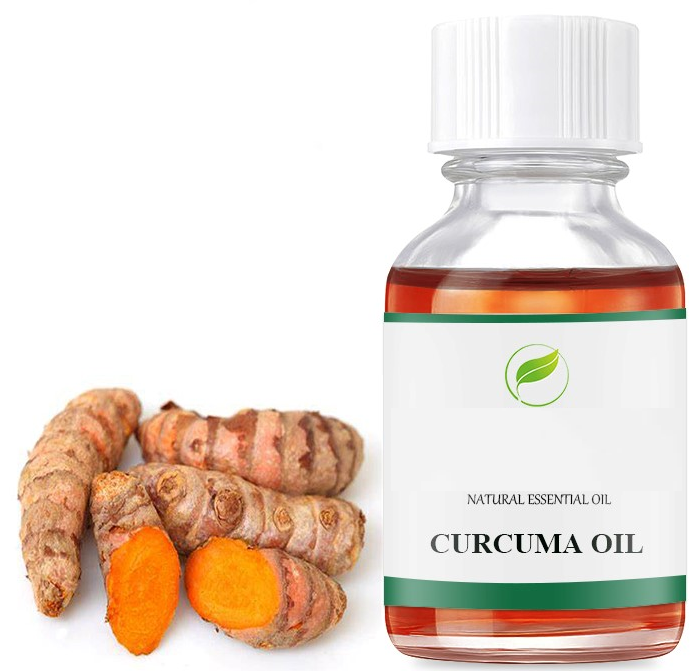
2. Turmeric/Haldi Drops
Turmeric/Haldi is considered to be a natural remedy to a plethora of diseases for ages. Haldi drops are the water-soluble extracts of Turmeric that contain Curcumin as an active ingredient. Curcumin extract help boosts immunity and reduces inflammation. Haldi drops have antioxidant properties and help to cure cough and cold. It is also good for the skin and joint health. It has benefits for overall health and skin issues. Haldi drops can be missed in the water, milk juice, or any other beverages and can be consumed.
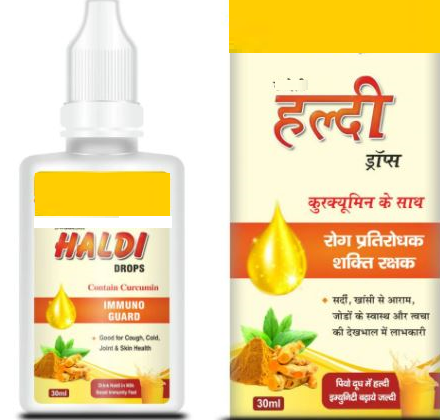
3. Curcumin Powder
Curcumin is a bright yellow chemical produced by plants of the Curcuma longa species. It is the principal curcuminoid of turmeric (Curcuma longa), a member of the ginger family, Zingiberaceae. The most common applications are as an ingredient in dietary supplements, cosmetics, flavoring for foods, such as turmeric-flavored beverages in South and Southeast Asia. It is also widely used as a coloring agent for food products, such as curry powder, mustard, butter, cheese. As a food additive for orange-yellow coloring in prepared foods, its E number is E 100 in the European Union. It is also approved by the U.S. FDA to be used as a food coloring in the USA.

4. Haldi Doodh/ Golden (Turmeric) Milk
Golden milk, also known as turmeric milk/Haldi Doodh, is an Indian drink that has been gaining popularity in Western cultures. This bright yellow beverage is traditionally made by warming up cow or plant-based milk with turmeric and other spices, such as cinnamon and ginger. Enriched with the goodness of nature, turmeric has some amazing antiseptic, anti-inflammatory properties, anti-microbial, anti-allergic properties, which further help in preventing as well as curing several diseases. In fact, a blend of turmeric and hot milk a day can keep several diseases at bay. It is a great home remedy beverage for cough, congestion, colds, and skin problems. Many Prominent Food FMCG’s such as Amul, Mother Dairy, Dabur are commercially selling Turmeric milk in the market. It is in fact getting immense popularity among consumers in India as per market trends.
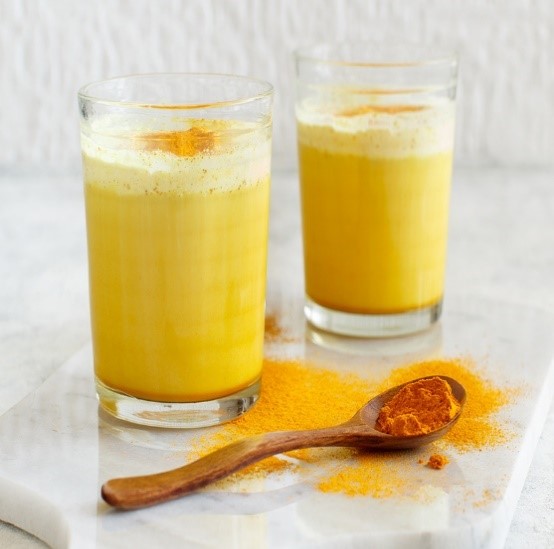
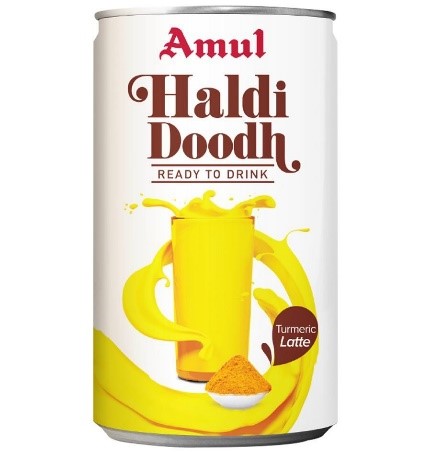
(Content shared by Garima Kapoor, Young Professional, PMU NIFTEM)
Curcumin, the main active ingredient in Haldi has powerful anti-inflammatory effects. It is gluten- and dairy-free and a very strong antioxidant. It is mildly aromatic and has scents of orange or ginger. It has a pungent, bitter flavor. Value addition is the most important process for higher earnings and can help the farmers for their livelihood enhancement and security. The processing of value-added products helps in the reduction of post-harvest loss as well as increases the farmers’ income. Additionally, it helps in the off-season availability, balancing of nutrients, generate employment opportunities and increase export trade and foreign exchange. Some of the value-added products of Turmeric are shown below:

5. Turmeric Powder
Turmeric powder is a popular spice used primarily in Asian cuisines. It also comes with many health benefits.
Process of making Turmeric powder
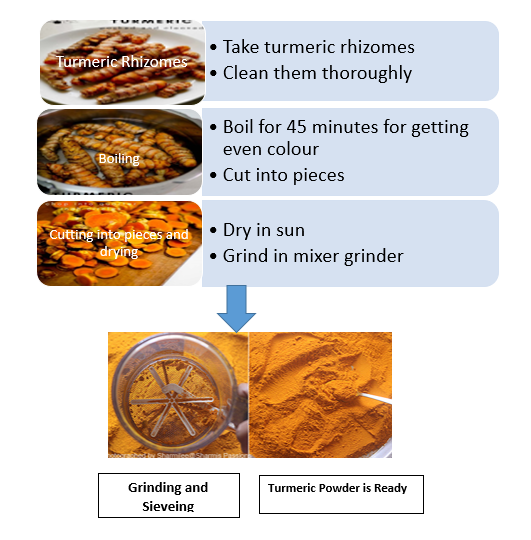
6. Turmeric Pickle
Turmeric Pickle is very popular in India. The benefit of pickle is it has a long shelf life and still gives you the taste of fresh turmeric.

7. Ingredients
| Ingredient | Quantity |
|---|---|
| Raw Turmeric | 1 Kg |
| Mustard Oil | 250 ml |
| Salt | According to taste |
| Red Chilli Powder | 1 tsp |
| Rai Powder ( Mustard Seed ) | 2tbsp |
| Vinegar | 50ml |
| Cumin Seeds | 1tbsp |
| Fennel | 1-2 tsp |
Method of Preparation

Turmeric Chutney:
Turmeric chutney recipe that not only warms you up from within but also wards off cold and flu during winter.
| Ingredient | Quantity |
|---|---|
| Raw Turmeric | 1 Kg |
| Mustard Oil | 250 ml |
| Salt | According to taste |
| Red Chilli Powder | 1 tsp |
| Jaggery | 250 gm |
| Vinegar | 50ml |
| Cumin Seeds | 1tbsp |
| Fennel | 1-2 tsp |
Flow Chart for making Turmeric Chutney

Wash Turmeric Rhizomes and Peel 
Cut into small pieces and Boil for 10 minutes 
Grind in a mixer 
Heat oil in a pan and add paste of turmeric rhizomes along with spices 
Add vinegar and jaggery and cook till it gets thickened 
Store in a glass Jar

8. Raw Turmeric Panjiri
Panjiri is a traditional North Indian healing food for new mothers. It is considered a ‘hot’ or warming food for providing nourishment and energy to new mothers. It is also eaten during winter to replenish and strengthen the body. Though Panjiri recipes vary based on region and family, this is a long-standing, traditional version made with a base of ghee, whole wheat atta flour, semolina (sooji), dried fruit, nuts, and seeds. Since Haldi has powerful anti-inflammatory effects and is a very strong antioxidant it can be also used for Panjiri.
Ingredients
| Ingredient | Quantity |
|---|---|
| Raw Turmeric | 200 gm |
| Ghee | 250 gm |
| Wheat flour | 100 gm |
| Almonds | 50 gm |
| Raisins | 20 gm |
| Cashew nut | 50 gm |
| Ginger Powder | 50 gm |
| Jaggery | 100 gm |
Method of preparation:
- Wash fresh rhizomes of turmeric and peel
- Heat ghee in a pan, add turmeric slice, mix well and fry till turmeric are crisp.
- Remove in a plate and keep it aside.
- Add raisins in a pan and fry till raisins puff up.
- Remove in Plate and keep it aside.
- Switch the flame at low temperature, add wheat flour, mix well and sauté for 2-3 min.
- Remove in plate and keep it aside.
- Add chopped almond and cashew nut in same pan and dry roast for 1 min.
- Remove in a plate add ginger powder and jaggery and mix well.
- Take fried turmeric in grinder jar and grind well.
- Add this into the prepared mixture and mix well until mixture is cool down.
- Remove in serving plate and serve.
9. Raw Turmeric Panjiri

Ingredients
| Ingredient | Quantity |
|---|---|
| Raw Turmeric | 500 gm |
| Ghee | 30 gm |
| Makhana | 150 gm |
| Almonds | 100 gm |
| Raisins | 20 gm |
| Cashew nut | 100 gm |
| Walnut | 50 gm |
| Grated coconut | 100 gm |
| Jaggery | 500 gm |
| Black Pepper Powder | 10 gm |
Method of preparation:
- Wash, peel and grate raw turmeric.
- Heat a small amount of ghee and roast dry fruits till slight crunchy. Take out and keep aside.
- Grind coarsely almonds, cashews, rasins and walnuts. Keep aside.
- In pan, heat oil and roast grated turmeric. Cook on medium flame for 10-15 minutes till raw flavour goes away and oil separates. Remove turmeric and keep aside.
- Add jaggery and make syrup. Add remaining ghee. Continue heating till uniform consistency.
- Stop heating. Add powdered dry nuts to jaggery syrup. Mix well.
- Add roasted turmeric to jaggery mix. Add coconut and black pepper. Mix well.
- Once little cold make round balls.
- Serve kachi haldi ke ladoo.
10. Raw Turmeric Halwa

| Ingredient | Quantity |
|---|---|
| Raw Turmeric | 500 gm |
| Ghee | 75 gm |
| Milk | 200 ml |
| Almonds | 100 gm |
| Raisins | 20 gm |
| Cashew nut | 100 gm |
| Walnut | 50 gm |
| Wheat flour | 100 gm |
| Jaggery | 100 gm |
| Black Pepper Powder | 10 gm |
Method of preparation:
- Heat 2 tbsp Ghee. Roast wheat flour for 5-7 minutes till golden brown. Remove and take aside.
- Heat remaining Ghee and roast turmeric on medium flame for 10 minutes till raw flavour evaporates.
- As ghee separates, add flour and mix well. Add milk and stir. Add mashed jaggery and mix well.
- Continue heating till mixture is consistent for 4-5 minutes.
- Add dry fruits and mix well
- Serve Turmeric Halwa hot
(Content shared by Dr. Kavita Sharma, Principal Extension Specialist (Home Science), Krishi Vigyan Kendra Mandi, Sunder Nagar, Himachal Pradesh)